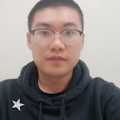Chip Packaging Part 4 - 2.5D and 3D Packaging
View the TechXchange: Chip Packaging table of contents
This is the fourth part of the series on chip packaging technologies. In this episode, Dr. Navid Asadi’s group looks at 2.5D and 3D chip construction.
About the Author
Navid Asadi
Assistant Professor
Navid Asadi is an assistant professor in the department of electrical and computer engineering at university of Florida. His research is mainly focused on physical inspection of electronics from device to system level. He investigates novel techniques for integrated circuits counterfeit detection/prevention, system and chip level reverse engineering, anti-reverse engineering, invasive and semi-invasive physical attacks, integrity analysis, etc. using advanced inspection methods including but not limited to 3D X-ray microscopy, Optical imaging, scanning electron microscopy (SEM), focused ion beams (FIBs), THz imaging, etc. in combination with image processing and machine learning algorithms to make the inspection process intelligent and independent from human. He has received several best paper awards and is the co-founder of IEEE-PAINE conference.

Alonso Conejos-Lopez
Undergraduate at the University of Florida
Alonso Conejos-Lopez is an undergraduate student at the University of Florida majoring in Electrical Engineering, with a minor in Sustainability and the Built Environment. He is working as a student researcher for the Florida Institute for Cyber Security, where he focuses on chip packaging security, with the aim to improve security measures and develop counterfeit detection methods for integrated circuit packaging. He has also been making a comprehensive series of instructive videos about the packaging industry, technology, and history.

Peter Xi
Ph.D student at the University of Florida
Peter (Chengjie) Xi is currently a Ph.D. student at the University of Florida in the Electrical and Computer Engineering Department. He received an M.S. degree in Materials Science and Engineering from the University of Florida in 2020. His research is focused on developing counterfeit detection and prevention methods for integrated circuit packaging. He investigates various material characterization methods in combination with machine learning algorithms to generate unique fingerprints to make the characterization fast and independent from humans.
